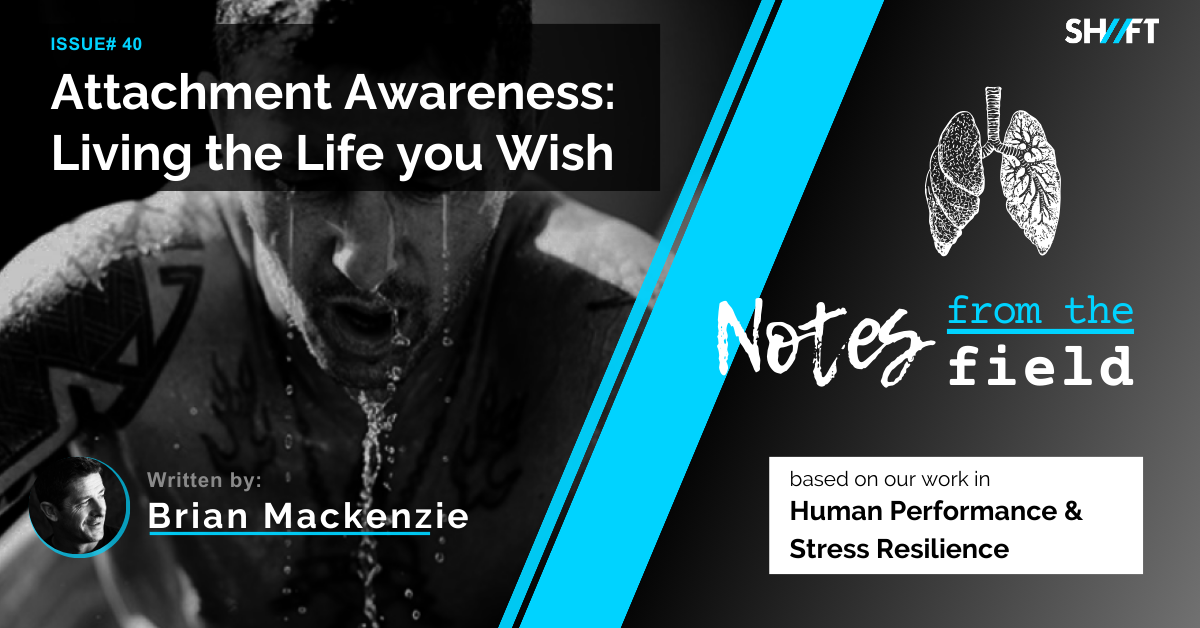Issue #40
The most potent tool we have is awareness. Awareness is where our minds thrive most. The ability to be aware of when something works for me and when it does not is a tough road at first, and its crucial emotion is frustration, followed by anger. I have been stuck many times in frustration, unwilling to see how whatever I have been doing is not working out for me. When I started understanding some of the basics of stress physiology and its relationship with exercise physiology, I began to see more clearly what my body was saying and how my mind was in a different world, convinced I needed to do things a particular way.
I will give a broad example, but I encourage you to understand how minute this gets to the most minor things.
The Sacrifices We Make
Often, what we believe we value is trumped by our behavior. For example, I’ll convince myself that I love to go out with my friends on weekends and that this lifestyle isn’t as important as my health. In reality, every weekend and time I go out with my friends, I am making sacrifices that require my body and me to work harder to get back to what is homeostasis. The short basic version of the physiology is increased cortisol and lactate (inverse relationship to fat burning & dependence on sugar + glucose), decreased (long term) HRV, and nervous system efficiency. While a healthy, fit individual can get away with these things from time to time, no healthy and fit individuals are doing this routinely because they feel the changes and the increase in rest that is now required to get back to doing what it is that makes them feel like they operate at 100%.
Balancing Performance with Entertainment
You might be asking. So am I not supposed to see my friends? I don’t know! I know that when I set rigid boundaries on my health with things that make me function well, like moving, mobility, exercise, playing (surfing, hiking, etc.), the food I eat, and the time at which I get tired, the more I want to spend time with the people I care about, and who value the same things.
Another way to look at this is through the lens of HRV, which has so much data and research on it. HRV is a way of understanding the health of your cardiac and nervous systems. Another avenue could be constant glucose monitors or glucose monitoring.
Imagine an HRV score improving slowly over a year because you decided to care for yourself more. Then, after a few months, you go out and have a good time. Your scores drop the next few days, and your body plays catch up. All is good as you return to baseline. Then another night pops up, and another late dinner you decide is important (maybe it is). The next thing you know, your new HRV scores are much lower than before, and it is a real chore to get back into a routine of taking care of yourself as we slowly but surely start giving up on what worked best for you. While this example may seem extreme, it is not. I’ve lived this, and I see this in almost everyone I work with.
Ignoring Information and Long-Term Awareness
There is a world we become attached to (not good) that is showing us what does not work for us, and most of us ignore that information, whether it be intrinsic or data-driven, because we are unwilling to give up these attachments. We feel a death sentence comes on, and in many cases, it can be. Much of our lives focus on chasing short-term feelings versus understanding what we want. Being aware enough to understand much of our lifestyle choices and how they make us feel long-term is often the difference between living the life you truly wish to and one of frustration.
It’s All in the Data
The simplicity of this exercise comes down to taking the time to understand the data. While getting low HRV scores or high glucose readings are manageable, see if this makes sense. Readiness scores are calculated on many HRV algorithms to give us a little nudge on which direction to go. Let’s use 1-10 and say your HRV is a 50 avg. Each day you’re consistent, you see this score between 7-10, and you slowly creep up above a 50 HRV. Then you do X (whatever it is), and your readiness score drops to 1-6, and HRV drops to 40. You follow this pattern and continue to do X while getting routine low scores.
Stop doing X because it’s not working out. Say’s the truth!

This isn’t Black and White
This does not always imply a black-or-white meaning, either; it may require creativity to appease these ‘attachments.’

